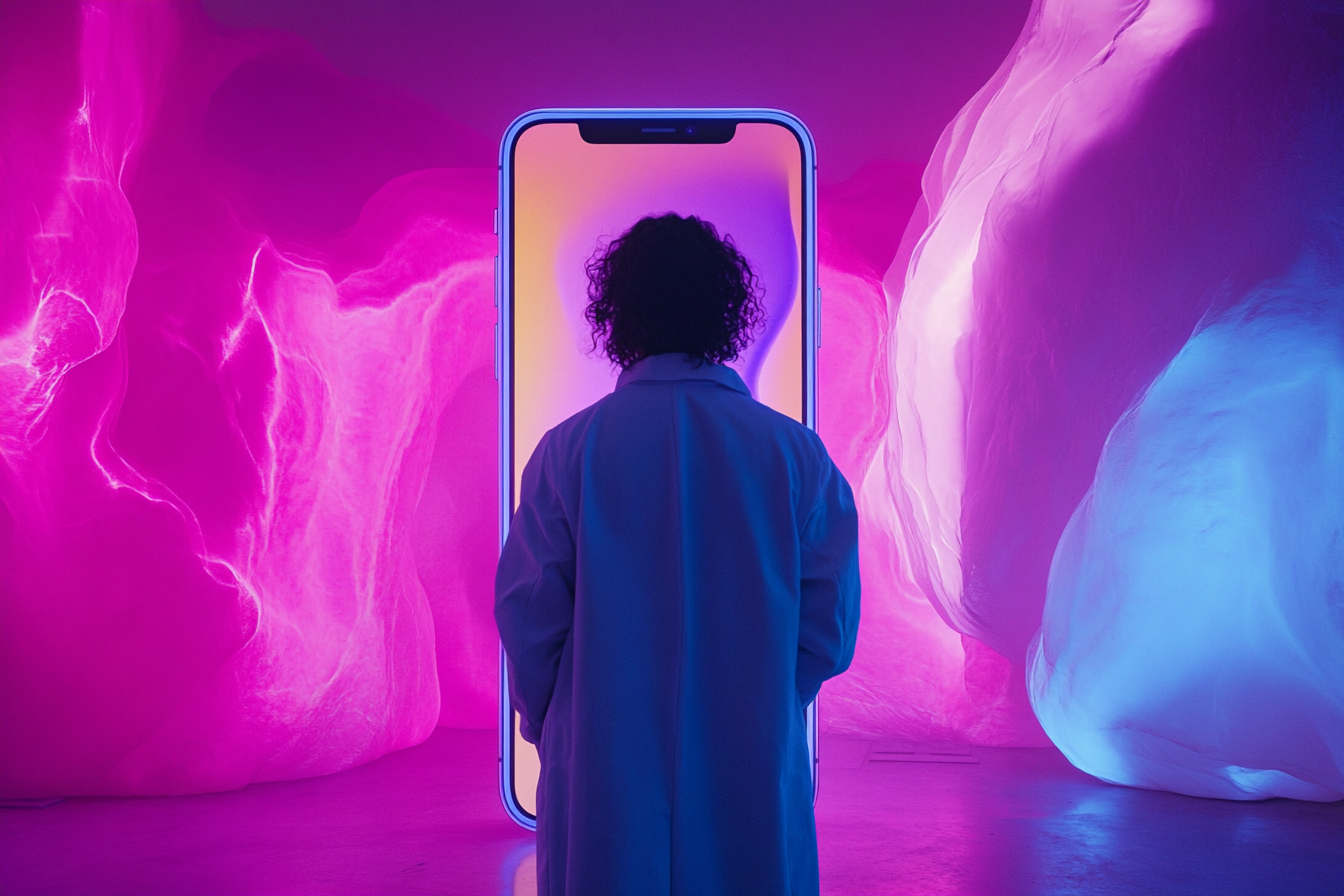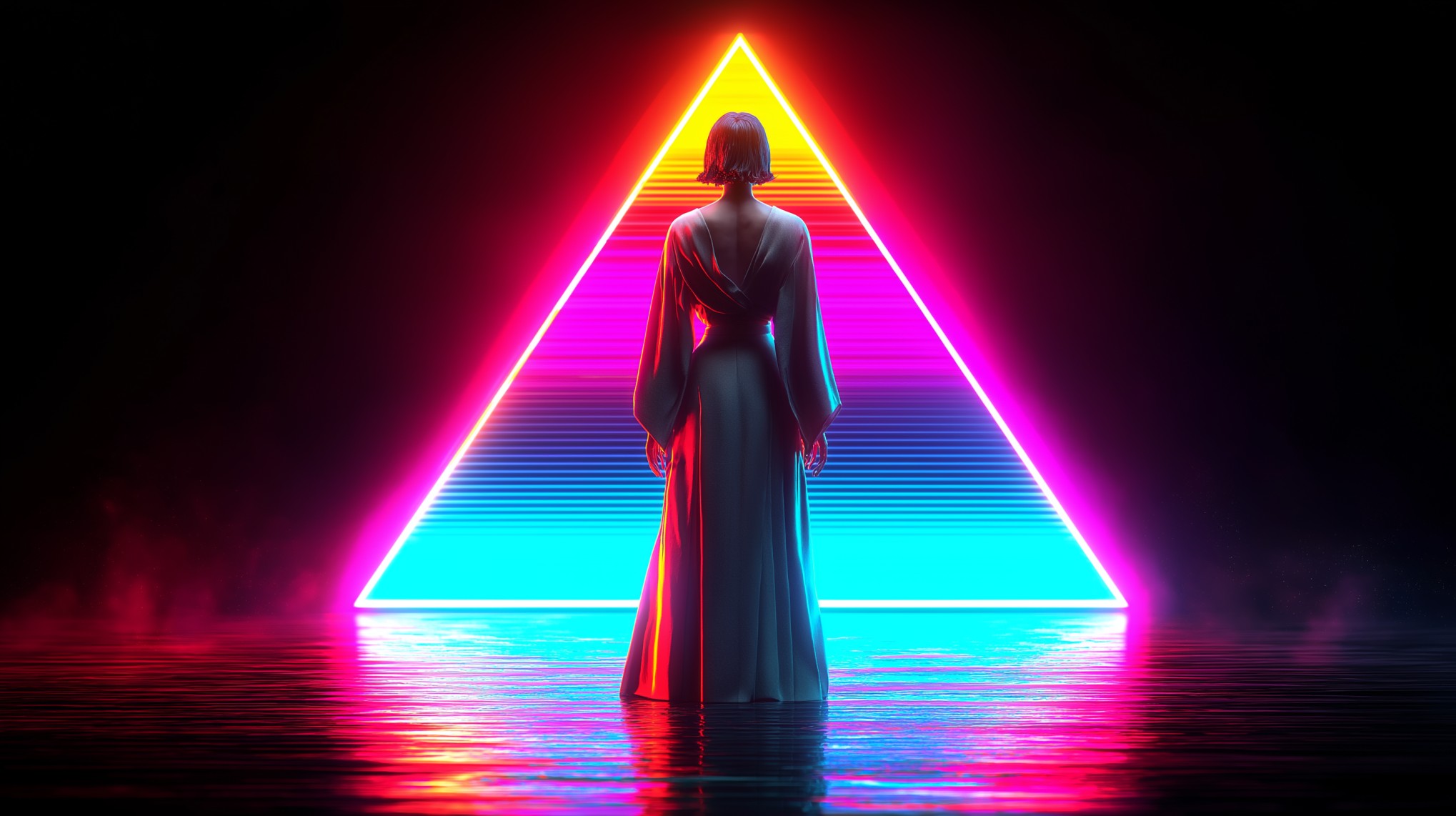Editor's Note: This article is one of our four-part series called The TikTok Revolution. In this series, we cover the changes and ascent to influence that TikTok has experienced, the significance of its algorithm, and how you can create effective TikTok ads for your practice's needs. Here are links to all parts of the series:
Part 1: The Revolution is Here
Part 2: How Practices Can Find TikTok Success
Part 3: How to Dominate TikTok Ads and Increase Leads
Part 4: What Makes TikTok's Algorithm Tick?

This image was generated by Midjourney, an artificial intelligence program that creates images from textual descriptions. Crazy right?
Here at Incredible, we’re big movie buffs. And if we were to write a movie about the future of TikTok, the opening scene would begin with the classic “you might be wondering how I ended up in this situation” moment.
You would find yourself a Black Mirror-esque world where money is no longer currency. Instead, you’re doing the latest dance trend to an audience of thousands who are tuned into their local Starbucks’ livestream. The worst part? 45 seconds in and you still haven’t gotten enough likes to pay off your latte.
Then, just as you run out of ideas and consider resorting to doing the shuffle, the screen goes black, and the text — “Ten Years Earlier” — stretches across the screen.
Living In a Social Dystopia
Unfortunately for us, we aren’t in a movie, but the symptoms of this social dystopia are already starting to surface. Meta, Feta, Jetta or whatever it is Facebook calls themselves these days keeps lowering the already-low ethical bar in the social space. Googletube is slapping its creators with demonetization like Chris Rock just made fun of someone’s wife. And Elon Musk owned Twitter for, like, 30 seconds… kinda?

Our point is this: social media has proven itself to be volatile, and if the old guards of social media like Facebook, Instagram, YouTube and Twitter are being dethroned, then it’s probably time to start paying attention to the platform giving them the Game of Thrones treatment… that is, if you want to stay relevant and make the most of your social marketing.
In this four-part series, we will explore how your brand can dominate on the kingslayer platform, how you can increase the leads you generate from your social marketing, and why the TikTok algorithm is so. damn. good.

This image was also generated by Midjourney.
But to understand all of that, you need to be briefed on some fundamentals about how the short-form video format that TikTok uses came to be. After all, every dystopia has its origin story, and, whether we like it or not, the TikTok Revolution is already here.
It’s Alive! A Monster Platform Is Created

TikTok’s success was no accident. A group of mad tech scientists got together and calculated the elements that, when combined, would create a socially magnetic experience capable of changing the world. It was a calculated and strategic business idea that was executed to perfection. *chef’s kiss*
Much like Bitcoin, the writing was on the wall that this revolution was on the horizon. And just like we’re all jealous of that friend-of-a-friend who somehow knew about Bitcoin when it was $25, there are a ton of app developers out there today feeling the same kind of sting in their wallets.
(That friend-of-a-friend now lives on a yacht named the “S.S I Told You So,” by the way.)
Franken-App

This image was generated by Midjourney.
The TikTok that we know and love (and love to hate) today is a conglomerate of three different apps: Musical.ly, Toutiao and Douyin. Many of the early adopters who downloaded these apps in the early 2010s saw an opening in the market and knew it would only be a matter of time before someone filled it with one irresistible super-platform.
TikTok has now entered the chat.
Toutiao Takes Over News

Before any of these platforms debuted in the U.S., Toutiao became a massive success in China. Toutiao’s full name is actually Jinri Toutiao, which means “today’s headlines” in Chinese. The news-aggregation platform launched in 2012 and made headlines due to the remarkable success of its smartphone app, which claims to “figure out” users within 24 hours.
How good can Toutiao’s algorithm really be, you ask? Well, the average user spends more than 74 minutes each day on Toutiao, an astronomically large number considering the average time someone spends across all platforms is between 120 and 140 minutes per day.

Toutiao’s algorithm is so good it doesn’t just serve up content — during the 2016 Olympics, a Toutiao bot wrote and published original news coverage. This supercharged algorithm paved the way for TikTok’s infamously addictive and personalized content feed. But more on that later…
Musical.ly Makes Waves

If you were or had a teenage girl back in 2014, you may recall Musical.ly. It was the first of these apps to gain significant visibility in the U.S. Launched in July 2014, Musical.ly saw steady growth, and by July of the following year, they were the No. 1 app in the iTunes store.
While Toutiao focused on news and grew in the Asian market, Musical.ly embraced fun and quietly built an army of youthful users lip-syncing and dancing to the latest hits. Co-CEO Alex Zhu made the bold choice not to prioritize profits and advertisers. Instead, he positioned Musical.ly to be the next social network — one based on entertaining videos with familiar music and creative dances that could be replicated and easily shared, giving users plenty of reasons to come back for more.
(Sound familiar?)

Zhu was quoted in 2016 as saying, “Today, the very proposition of the app is not about creating music videos. It’s not about lip-syncing. It’s about a social network. It’s a community. People want to stay because there are other people.” This allowed the app to gain a strong foothold in the U.S.
While catering to its creators, Musical.ly looked for other ways to grow its customer base. One simple change made all the difference. On a fateful day in April 2015, the company made a design tweak to the app that would set the standard for all companies to follow: repositioning its logo to the bottom corner of the video. Muscial.ly discovered how impactful sharing content was even back in 2015.
They made sure every video created could be identified as a piece of Muscial.ly content, no matter where it was posted — a strategy that TikTok employs to this day, much to Instagram’s disdain.
Douyin Dominates Video

Wanting to mimic the success of apps like Musical.ly, ByteDance went to work creating their own version of the platform. In 2016, the company released an app called Douyin. Within the first year of release, 100 million users signed up for the platform. These users spent their time creating, editing and sharing short videos and fueling the popularity of live streams.
After finding success in the Chinese market, ByteDance started positioning themselves to move into the global market. But the original iteration of the app had to adhere to the Chinese government’s strict regulations. To be successful elsewhere, ByteDance knew they needed to make changes to the new platform, but they didn’t want to disrupt the formula that was already bringing them success.

Instead, they acquired another app that was quietly gaining popularity in their target market. In November 2017, ByteDance acquired an undiscovered app called Musical.ly. We didn’t know it then, but this was the beginning of a new chapter in how the world communicates.
In August 2018, ByteDance released TikTok, which incorporated the most successful parts of each precursor into one super app:
- Toutiao’s revolutionary algorithm
- Douyin’s all-in-one ecosystem for creating, editing and sharing short videos
- Musical.ly’s 200 million users already accustomed to the features now found on TikTok
The result was an irresistible app paired with the most elaborate algorithm we’ve seen to date — one that can figure out a user’s tastes better than any competitors on the market. TikTok is a genius fusion of digital elements that create a dynamic experience that may never be replicated to the same level of success again. It was an automatic hit.
Joining the Revolution

This image was generated by Midjourney.
While the history of TikTok and similar platforms won’t really inform what kind of role the app will play in your medical practice, it can help you figure out how to successfully implement TikTok as one of the many tools in your arsenal. As we move into Part 2 of this series, we will begin asking questions like, “What are your goals, and how do you plan to get there?” What do you have to offer the users of the platform?”
TikTok can confidently claim the best algorithm for discovery, and we’ve already seen the ripple effect it has had on consumer behavior. In the next section, we will walk you through the ways to start leveraging TikTok in your practice.
As usual, our educators are here to answer any questions you have, anytime, for free. Give us a call at (800) 949-0133 or schedule a one-on-one.










